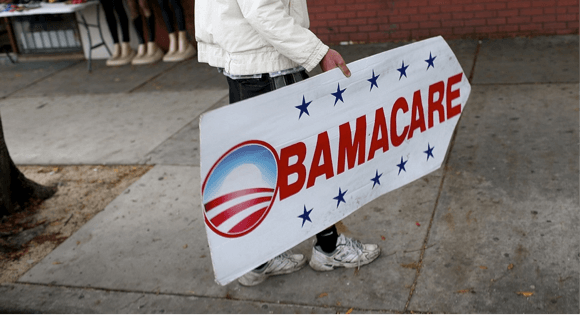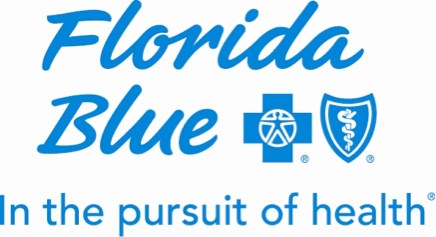September 20, 2016

Market Evolution: Addressing Structural Flaws on Public Health Exchanges
After two-plus years of operations, clear structural flaws have emerged in the design and function of public health exchanges. Health insurance cooperatives have largely failed. Many traditional insurers have suffered sizable losses and are exiting the public marketplaces. Others are dramatically raising rates. Moreover, high co-payments and deductibles have discouraged many potential enrollees from purchasing health exchange products.
Not all the news is negative. Over 9 million people have enrolled in public exchanges and an additional 11 million in expanded Medicaid programs. The nation’s percentage of people without health insurance has declined from 16% in 2010 to 9% in 2015.[1] Some plan sponsors, such as Blue Cross Blue Shield of Florida, have achieved both high enrollment and profitability with narrow networks and high-deductible health plans.
All markets evolve. Participants with differing capabilities and resources adapt to, and influence, changing supply-demand relationships in search of profits and sustainability. Regulated markets infuse added variation into the competitive dynamics through significant governmental incentives, penalties and oversight. Some companies are better at adjusting their business models to new regulatory schemes than others. This adds both complexity and uncertainty to market positioning.
Given the ACA’s ambitious scope, the program’s complexity, the uneven preparedness of plan sponsors, state-specific requirements and inconsistent governmental regulation, the turbulence roiling the public exchanges is not surprising. Quite the contrary. Market evolution rewards “fitter” participants over time. Program designs improve. Consumers become better purchasers. Governments become more proficient regulators. Prices adjust. As a society, this is the wrong time to abandon the exchanges. It is the right time to make them better.

Carnage on the Public Health Exchanges
The ACA launched the public exchanges to create marketplaces in which individuals and small groups could purchase qualified health insurance policies with subsidies from private insurers. For many plan sponsors, the ACA offered a remarkable opportunity to enroll millions of new customers. Accordingly, many structured initial plan offerings with attractive pricing to entice new enrollees. It worked. Millions enrolled.
Instead of discovering riches, however, many plan sponsors found themselves swimming in an ocean of red ink. Relying on traditional usage metrics, they overestimated the health of new enrollees. Medical cost ratios skyrocketed. Government provisions (risk adjustment, reinsurance and risk corridors – aka “the 3 Rs”) proved inadequate in mitigating participant losses, with risk corridor underfunding exacerbating the problem. Calamity ensued.
Aetna, Highmark, HCSC, Humana and UnitedHealthcare all have suffered significant losses. United plans to exit all but “three or fewer” exchanges after 2016. Similarly, Aetna just announced that it will exit 11 of the 15 states in which it currently offers coverage through the exchanges.
More than 650 counties are on track to have just one insurer on their exchanges in 2017, up from 225 in 2016. After increasing from 253 to 307 in 2015, the number of insurers offering exchange products declined to 287 in 2016.[2] A Kaiser Family Foundation analysis suggests program participants will decline further in 2017 to 2014 levels.[3]
Health insurers not exiting exchanges are raising premiums dramatically. Covered California, California’s health insurance exchange, announced that next year’s rates will increase by an average of 13.2%. Some exchanges are experiencing 20+% increases on individual products.
For the public exchanges, the risk pool remains a fundamental problem. “Risk pool” is the metric health insurers use to predict its members’ healthcare use and cost. The more accurately health insurers can project their members’ health expenditures, the more tightly they can price their health insurance policies.
The modest “individual mandate” penalties and enrollment flexibility weaken the risk pools. Healthier people, naturally enough, have disproportionately opted out while sicker individuals have disproportionately enrolled.
Uncertainty regarding the funding costs of their public exchange members’ healthcare needs is the principal factor driving 2017’s double-digit premium increases. The relative ease with which individuals can purchase health insurance when they need it (through special enrollment provisions) makes calibrating the risk pool’s future costs even more difficult.
Meanwhile, governmental penalties aren’t tough enough to force more expansive “pre-emptive” enrollment by healthier, lower-cost individuals. All insurance works best when the premiums paid by large numbers of low-cost members offset the high coverage costs of a small percentage of members with certifiable claims.
Strong individual mandates, whether for car insurance or health insurance, facilitate the insurance industry’s ability to sell affordable insurance policies, provide expansive coverage and pay legitimate claims.

Disruptive ACA Features
Before the ACA, large commercial health insurers typically priced policies according to historic medical use patterns. With unreliable trend data, inadequate risk adjustment, limited “risk corridor” funding and fewer mitigation tools, health insurers have experienced much greater underwriting risk on the public exchanges.
Insurance companies that have offered narrow network, high deductible plans have fared better than those offering more expansive provider networks and less-punitive co-pays and deductibles.[4] More intensive enrollment counseling and early member evaluations also appear to mitigate operating losses.
The significant expansion of Medicare Advantage enrollment, however, suggests that the American public trusts private companies to manage their total healthcare experience. Effective care management of large populations is American healthcare’s greatest deficiency and the industry’s most substantial business opportunity.
Ironically, the high risks of offering health insurance on the public exchanges create a substantial business opportunity for innovative companies willing to test business models that seek to reduce the levels of healthcare use by high-risk populations. In theory, better program design and care management can reduce risk pool uncertainty and make health insurance more affordable. New approaches to health plan design may reinvent health insurance and delivery as we know it across the individual, group, commercial and governmental sectors.

Exchange Success: Blue Cross Blue Shield of Florida[5]
Markets are agnostic with regard to organizational structure, tax status and mission. They run on results. When given the opportunity, customers flock to companies offering higher-value products and services. Public exchanges provide a laboratory for observing value creation in action.
Like many non-profit Blues plans, Blue Cross and Blue Shield of Florida feels a corporate obligation to participate in its state’s public exchange. Unlike most Blues plans, Blue Cross and Blue Shield of Florida has achieved both expansive enrollment and profitability on its exchange offerings.
Modern Healthcare reported in June that the Florida Blues’ gross profit on ACA-compliant plans jumped to $471 million in 2015 from $124 million in 2014. This translates into an 83% medical loss ratio or “MLR” (the percentage of health insurance premiums spent on health claims), well above the ACA’s 80% MLR mandated threshold.
Florida Blue had approximately half a million members enrolled on exchange products in 2015. More than 90% of Florida enrollees receive premium subsidies and over 70% receive co-pay and deductible assistance. These governmental subsidies contribute significantly to the Florida Blues’ profitability and their ability to provide cost-effective, comprehensive health insurance policies. It’s not rocket science. Lower premiums and out-of-pocket costs increase market demand for health insurance policies.
Company officials also stress the effectiveness of its retail centers in directing prospective enrollees to the right plan, helping them secure federal health insurance subsidies and guiding their health and wellness behaviors. Connecting with members is essential to Florida Blues’ success on the Florida exchange.

Exchange Evolution
An August 2016 report issued jointly by the Center on Health Insurance Reforms and the Robert Wood Johnson Foundation, “Strategies to Stabilize the Affordable Care Act Marketplaces: Lessons from Medicare,”[6] offered the timely perspective that government-sponsored health insurance markets have experienced and survived “instability and uncertainty” before. While the dynamics of specific programs vary and are not perfectly comparable, the authors describe how both Medicare Advantage and Medicare Part D overcame initial volatility and weak participation through a range of strategies and policy remedies that fostered long-term success.
For example, policy-makers encouraged private insurers to reenter the Medicare Advantage program by raising payment rates. Similarly, government officials could entice private insurers back to ACA exchanges with tax credits and cost-sharing reductions that also could make plan offerings more attractive to consumers.
At the state-level, policy-makers can creatively apply “carrots and sticks” to encourage insurers to participate, or remain, in their exchanges. Combining regulatory relief with standardized coverage provisions makes it easier for insurers to enter and compete in exchange markets while building their networks and membership. A more robust blend of risk-adjustment, reinsurance and risk-sharing provisions would help stabilize prices and market participation.
Finally, expanding enrollment to healthier and younger members through a mix of attractive prices, consumer outreach, auto-enrollment and potentially stronger tax penalties would improve the risk pool and lead to less health plan pricing volatility.
Assessing greater non-enrollment penalties for individuals could be tricky. The Supreme Court upheld the “individual mandate,’’ in part, on the premise that its penalty is a tax because it “is not so high that there is really no choice but to buy health insurance.” Having onerous penalties sufficient to compel membership could jeopardize the provision’s legality.
No single solution is a silver bullet. Political gridlock may impede legislative attempts to fix the ACA. However, the concepts noted above embody a “Goldilocks” approach” to regulatory reform (not too hot, not too cold) that could improve risk protection and member incentives, encourage more network offerings, and adjust prices “just enough” to attract insurers and consumers.
The exchange markets themselves will also adjust and stabilize through a combination of consumer behavior and participant innovation. The current pricing turmoil is part of an evolutionary process that will align the design and pricing of health insurance policies offered on public exchanges with customer preferences and long-term financial viability.
Millions of individual health policy purchases will shape how health insurers tailor and market their products. This bottom-up, market-driven evolutionary process will reward companies that offer better health insurance policies. Expect private companies to find innovative ways to eliminate the current system’s inefficiencies and deliver higher-value healthcare services.
COURT HOUSEWORTH
 Court Houseworth is Co-Head of the Firm’s Mergers and Acquisitions Advisory practice and co-leads the Firm’s Managed Care and Behavioral Health advisory practices. In addition, Mr. Houseworth is a member of the Firm’s Executive Committee. Mr. Houseworth joined Cain Brothers in 2004 and has over 25 years’ experience advising both public and private companies in a variety of merger and acquisition, capital raising, and strategic advisory transactions, as well as valuations and nonprofit conversions.
Court Houseworth is Co-Head of the Firm’s Mergers and Acquisitions Advisory practice and co-leads the Firm’s Managed Care and Behavioral Health advisory practices. In addition, Mr. Houseworth is a member of the Firm’s Executive Committee. Mr. Houseworth joined Cain Brothers in 2004 and has over 25 years’ experience advising both public and private companies in a variety of merger and acquisition, capital raising, and strategic advisory transactions, as well as valuations and nonprofit conversions.
Cain Brothers is a pre-eminent investment bank focused exclusively on healthcare. Our deep knowledge of the industry enables us to provide unique perspectives to our clients and is matched with the knowhow needed to efficiently execute the most complex transactions of all sizes. www.cainbrothers.com
EDWARD FISHMAN
 Ed Fishman co-leads the Firm’s Managed Care Advisory practice. Mr. Fishman joined Cain Brothers in 1996, and has 30 years’ experience advising both public and private companies in a variety of merger and acquisition, strategic advisory, and valuation transactions.
Ed Fishman co-leads the Firm’s Managed Care Advisory practice. Mr. Fishman joined Cain Brothers in 1996, and has 30 years’ experience advising both public and private companies in a variety of merger and acquisition, strategic advisory, and valuation transactions.
Cain Brothers is a pre-eminent investment bank focused exclusively on healthcare. Our deep knowledge of the industry enables us to provide unique perspectives to our clients and is matched with the knowhow needed to efficiently execute the most complex transactions of all sizes. www.cainbrothers.com
[1] http://www.hhs.gov/about/news/2016/03/03/20-million-people-have-gained-health-insurance-coverage-because-affordable-care-act-new-estimates
[2] http://www.heritage.org/research/reports/2016/03/insurer-aca-exchange-participation-declines-in-2016
[3] http://kff.org/health-reform/issue-brief/analysis-of-2017-premium-changes-and-insurer-participation-in-the-affordable-care-acts-health-insurance-marketplaces/
[4] http://www.modernhealthcare.com/article/20160615/NEWS/160619946
[5] http://www.modernhealthcare.com/article/20160615/NEWS/160619946
[6] http://www.rwjf.org/en/library/research/2016/08/strategies-to-stabilize-the-affordable-care-act-marketplaces.html





